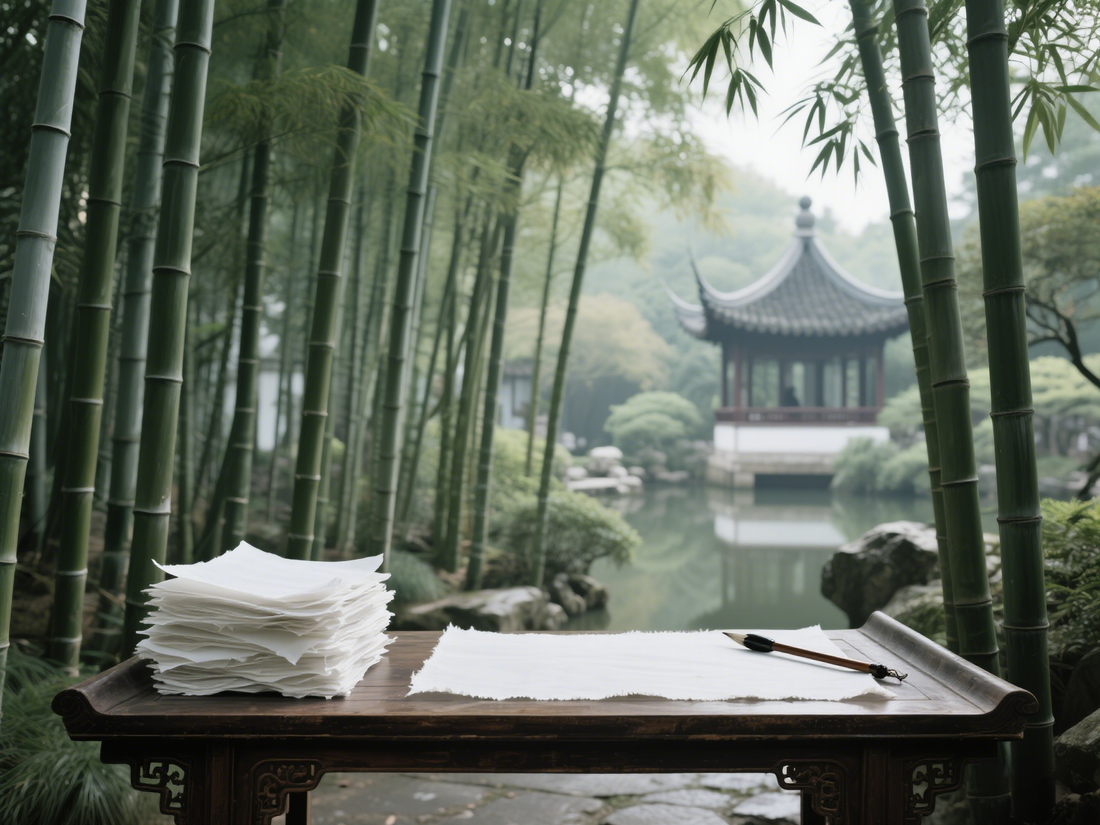
The main production areas of several different types of calligraphy and painting papers
Share
1. Traditional core production areas
-
Anhui Jingxian County (Xuan Paper)
- Since the Tang Dynasty, it has been the origin of Xuan paper, the "king of paper". It is made of euphorbia bark and paddy straw, and uses the ancient "sun-drying and rain-drying" natural bleaching process;
- Features: Excellent ink-absorbing properties, paper life of a thousand years. Representative brands include Red Star Xuan Paper, Wang Tonghe Xuan Paper Factory, etc.
-
Zhejiang Fuyang (Yuanshu Paper)
- Bamboo fiber papermaking technology has been passed down for thousands of years. It uses tender bamboo as raw material. It is white, flexible, and resistant to moths. It was used for imperial examination papers and official documents in ancient times.
- Derivative products include special craft bamboo paper for ancient book restoration, which is now listed as an intangible cultural heritage.
-
Sichuan Jiajiang (bamboo paper)
- The representative production area of "Shu Paper" in the Ming and Qing Dynasties, "Daqian Painting and Calligraphy Paper" was made from bamboo, which has moderate ink absorption and is affordable. Zhang Daqian once customized and improved this type of paper;
- Contemporary has developed diversified product lines including antique Xuan paper and colored Xuan paper.
2. Regional Characteristics of Origin
-
Zhejiang Longyou (Dalbergia paper)
- Inheriting the "rattan paper" craftsmanship of the Tang Dynasty, the paper is made from wild rosewood bark. The paper is as thin as a cicada's wing but has strong tensile strength, making it suitable for fine brushwork and rubbings.
- The manual copying cycle lasts as long as one year, and the annual output is only more than a thousand sheets.
-
Hebei Qian'an (Korean paper)
- Originated from the Korean papermaking technology, the mulberry fiber is coarse and interwoven, and the paper surface presents a unique curtain pattern, which is suitable for freehand ink-splashing creation;
- It has outstanding anti-aging properties and was mostly used for archival records in the Ming and Qing dynasties.
3. Modern Industrialized Production Area
- Shandong Chenming Group : Combining traditional craftsmanship with mechanical production, it has developed a series of imitation handmade calligraphy and painting papers to meet the needs of the mass market;
- Jiangxi Qianshan (Liansi Paper) : Restores the Lianshi paper making technique of the Ming Dynasty. The paper is slightly yellowish and elegant, and is specially used for rubbings of inscriptions and calligraphy and printing of ancient books.
Comparison of Origin Characteristics
| Paper Type | Core production area | Raw material characteristics | Application Scenario |
|---|---|---|---|
| Rice paper | Anhui Jingxian County | Pterocarpus chinensis bark + rice straw | Calligraphy/ink painting creation |
| Yuanshu Paper | Fuyang, Zhejiang | Young bamboo pulp | Calligraphy practice/ancient book restoration |
| Jiajiang Bamboo Paper | Jiajiang, Sichuan | Bamboo Fiber | Freehand drawing/cost-effective practice paper |
The contemporary calligraphy and painting paper industry presents a coexistence of "traditional handwork + mechanical improvement". The core production areas still adhere to the ancient craftsmanship, while industrialized enterprises expand market coverage through standardized production.
